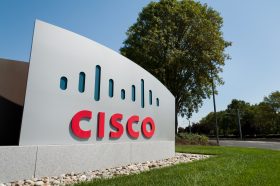Arrcus Extends NOS Platform

Networking startup Arrcus this week extended its campaign to deliver a services-grade network operating system (NOS) based on a distribution of Linux with the launch of ArcOSEthernet Virtual Private Network (EVPN) that enables the creation of a multi-tenant routing fabric using routing and switching protocols including BGP and EVPN/VXLAN to run on multiple switches at speeds up to 400 gigabit/sec (Gb/s).
The offering puts Arrcus in a position to provide an integrated networking stack capable of meeting the rigors of not just a 5G environment, but also highly distributed enterprise IT environments. Arrcus recently announced support of up to 400 Gb/s and its NOS is based on a modern microservices architecture.
Microservices Movement
One advantage of the Arrcus approach is the use of microservices, which enable applications to be built in a distributed fashion that virtualize the operating system. This is likely to be a strong trend when 5G networks are deployed, because the infrastructure is expected to be increasingly virtualized. Microservices are appealing because the approach is more flexible and consumes less hardware resources.
The Arrcus software uses containers deployed on a 64-bit instance of Linux running on switches built based on Tomahawk 3 processors from Broadcom. The latest offering also adds a multi-tenant capability that is crucial for isolating the delivery of network services across multiple switches at scale. That has enabled ArcOS to scale on individual switches using a composable, routing-centric paradigm, says Murali Gandluru, vice president of product management for Arrcus. The size of the market opportunity for Arrcus following the launch of ArcOS EVPN is now over $60 billion, he says.
Linux Movement Grows
Arrcus is betting on the trend to favor Linux-based systems, which can be cheaper to operate than proprietary platforms from Cisco, Arista Networks, and Juniper Networks, says Gandluru. By using open systems based on Linux, customers will be able to take advantage of the economic benefits of employing open-source technologies and commercial processors without compromising quality of service, says Gandluru.
Of course, Arrcus is not the first provider of network switches to run Linux. For example, (SDN) players such as Cumulus Networks and Pluribus Networks were early pioneers in building NOSes based on Linux. But Arrcus is betting that its move to microservices at scale will be a new differentiator.
Arrcus is also focusing on advanced routing features and advancing the integration of network operations and DevOps by providing application programming interfaces (APIs) that integrate its networking platform with IT automation platforms such as Ansible, Puppet, Chef, and SaltStack. As applications become more distributed, the tolerance for network latency continues to rapidly decline.
“Application latency has a direct impact on the end customer experience,” says Gandluru.
Most of the applications being deployed at the network edge are not only processing data in real-time at the edge, they need to interact over an extended network with a wide variety of services. Most of the legacy networks in place today are not able to support these classes of applications. There’s clearly a race on among services providers to provide the network infrastructure required to support those applications.
It might be too early to determine whether the Arrcus approach will separate it from the cloud of SDN networking vendors, but it’s clear that the market is starting to evolve more rapidly as a variety of approaches for delivering virtualized networking fabrics emerge.





















